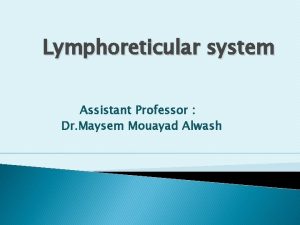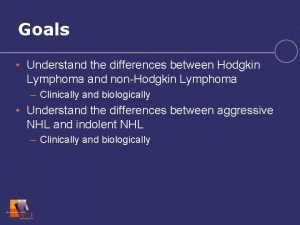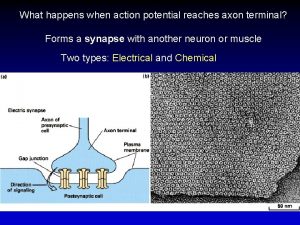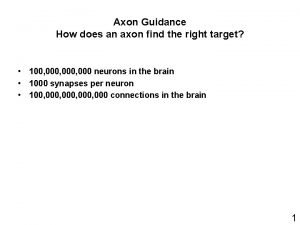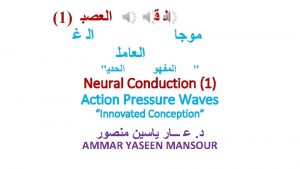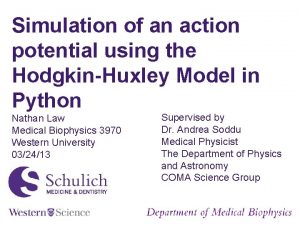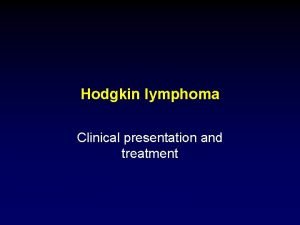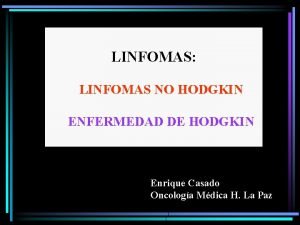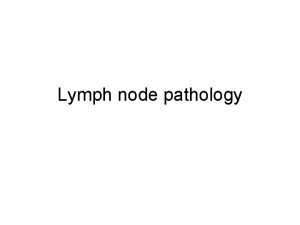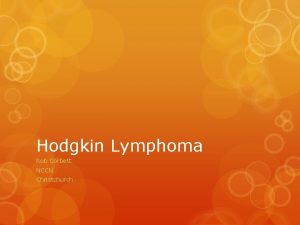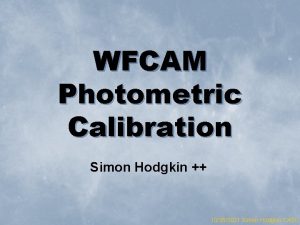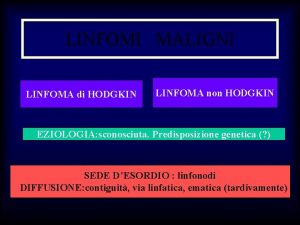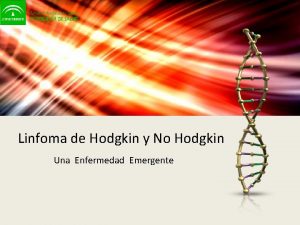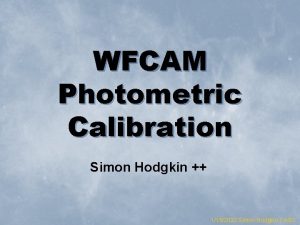Action Potential II the HodgkinHuxley Axon Hodgkin and


















- Slides: 18

Action Potential – II (the Hodgkin-Huxley Axon) • • Hodgkin and Huxley 1952 papers membrane permeability during AP AP threshold AP propagation

Fig. 2. 1

Voltage clamp Hypothesis: potential-sensitive Na+ and K+ permeability changes are both necessary and sufficient for the production of action potentials.

Voltage dependent permeabilities. Fig 3. 1

What ionic species are engaged? Fig 3. 2

The I/V curve of an AP Fig 3. 3

The involvement of Na+ (and K+) Fig 3. 4

Two separate ionic conductances (TEA) (TTX) Fig 3. 5

A rigorous description of membrane conductances V = IR (Ohm’s law) for Na+ in neurons: V = Vm - ENa (“driving force”, fixed in v-clamp) I = ionic current R = 1/conductance, g therefore, g = I/V

Na and K conductances with time Both conductances are voltage- and time-dependent g. Na+ quickly activates, then inactivates g. K+ slowly activates, does not inactivate Fig 3. 6

Na+ and K+ conductance are voltage dependent Na+ channel activation defines threshold fig 3. 7

Mathematical reconstruction of the AP g. Na+ and g. K+ fully explain AP: - shape - threshold - after hyperpolarization - refractory period - propagation Fig. 3. 8

Passive conductance is not great in an axon Fig 3. 10

Passive membrane properties Ch. 3 Box C

Propagation of an action potential Fig 3. 11

The mechanism of action potential conduction Fig 3. 12

AP propagation in a myelinated axon (“saltatory”) Fig 3. 13

Ion channel distribution in nodes of Ranvier Na+ channels in node of Ranvier (Rasband Shragger 2000)
 Difference hodgkin and non hodgkin lymphoma
Difference hodgkin and non hodgkin lymphoma Diff between hodgkin and non hodgkin
Diff between hodgkin and non hodgkin What happens when action potential reaches axon terminal
What happens when action potential reaches axon terminal Graded potential and action potential
Graded potential and action potential Neuronal pool
Neuronal pool Define graded potential
Define graded potential Graded vs action potential
Graded vs action potential Refractory period in action potential
Refractory period in action potential Sources of bioelectric potentials
Sources of bioelectric potentials Hypopolarization
Hypopolarization End plate potential
End plate potential Axon hillock
Axon hillock Action potential resting potential
Action potential resting potential Define electric potential and potential difference.
Define electric potential and potential difference. Volts to ev
Volts to ev Water potential
Water potential Difference between sales potential and market potential
Difference between sales potential and market potential Electric potential and potential difference
Electric potential and potential difference Joules per coloumb
Joules per coloumb
